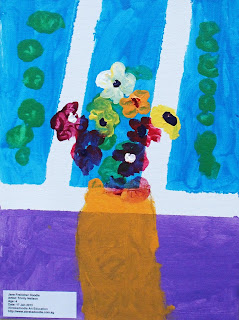After stabilising at 73kg and my brother psychologically kicking me in the rear (of course with all the love that he could muster), 16 months ago I said enough. I returned from an European trip, hubby bought me a juicer and without further ado I launched into a detox program for 5 weeks (see A Physical Wellbeing Journey - May 2012 - there are 5 weekly posts that describes my journey).
With a tunnel vision approach, I completed the program by losing 5.9kg with very little exercise. Satisfied with my initial effort, I took off for Australia to spend time with my family and indulged some more, mostly in wine and after 5 weeks I returned home with an extra 1.5kg which I was okay with and it was to be expected, after all I do like to enjoy my life.
Fast forward to February 2013 and after a series of weddings, Christmas, New Year and birthday parties, I felt the need to detoxify my liver (I really do love my wine and a good drop of scotch) so I launched into another juice detox. Only for a couple of weeks and I was a bit lighter with my approach. Still no alcohol or sweets but I had one coffee per day. I lost another 3kg and settled in at 65.6kg.
Four weeks ago, hubby and I concluded that it was time to start looking after our fitness now. At 40+ with an energetic 5 years old girl we figured that it would be unfair to Trinity and to ourselves if we let ourselves go much longer. It was time to build some muscle to keep osteoporosis at bay.
We now train 4 times a week by mixing it up and keeping it fun. Anything from a gym workout to swimming, tennis, rollerblading, scooting, boxing and sometimes just walking (straight to our nearest coffee shop but it still counts). With that I have moved another 1.4kg.
Four days ago, somehow I got roped into the "Biggest Loser Singapore 60 Day Fitness Challenge" by two of my delightful girlfriends. An 8 week fitness challenge which is essentially won based on how much body fat one loses. Well given that I'm already in the mid-range of normal for body fat, there's not much body fat % to move, so I figure the idea of the challenge is good to keep me motivated and keep me moving. I have absolutely no expectation of winning when compared to some of the other contestants that have a substantial task ahead of them. I truly hope they apply themselves and use this opportunity to make a difference to their lives.
I had my weigh-in three days ago and these are the stats I am starting the challenge with:
Height: 170cm (5'7")
Weight: 64.2kg
Age: 43
Body composition: Fat 29.6%, Muscle 42.9kg, Bone 2.8kg, Water 50%
Metabolic age: 36
Waist to hip ratio score: 0.74
What does all this mean and what is the normal target range:
- Fat % - for 40-59 yo which is my age range my fat % should be between 22 to 35%. Check, I'm right in the middle of that but my aim is to get it down to 25%.
- Muscle Weight - this is my muscle ratio to my overall weight. Normal is 50% of my weight or above. Given that I weigh 64.2kg, I am well and truly well above normal at 66%.
- Bone Density (keeping osteoporosis at bay) - Between 50-75kg it should be around 2.4kg. Good, I don't need to overload on calcium for bone density.
- Water Retention - 45-60% is considered normal, again I am in the middle so I can just keep up what I'm doing including the coffees I love drinking.
- Waist to Hip Ratio = 0.75 and below is excellent, 0.75-0.80 is good and so on. I am at the top end of the excellent range. There's room for improvement here since I would prefer to be below. I have a pear shape, so moving some inches from my hips would make me that much happier and that much easier to buy clothes.
- Metabolic Age - this is the condition of my body compared to my age. Given that I am 43 and my Met Age is 36, I have absolutely no complaint here. Apparently the more fat I move, muscle I gain, increase my water the lower my Met Age can be. Of course it makes sense, since the fitter you are the better you look or feel.
So along with my Challenge buddies, I started my first day of training by swimming 30 minutes and covering 400m in the morning and cycling 10km for an hour in the evening. The second day we hit the gym for a 10 minute treadmill warm-up followed by an upper body workout. Today, I'm off to a Zumba class followed by a boxing session tomorrow. This'll wrap up my first week and I'll leave the weekend to rest.
 |
| The babes working out followed by spa time to cool the muscles. |




.JPG)
.JPG)



+Potatoes.JPG)
.JPG)
.JPG)























.JPG)
.JPG)
.JPG)









.JPG)




